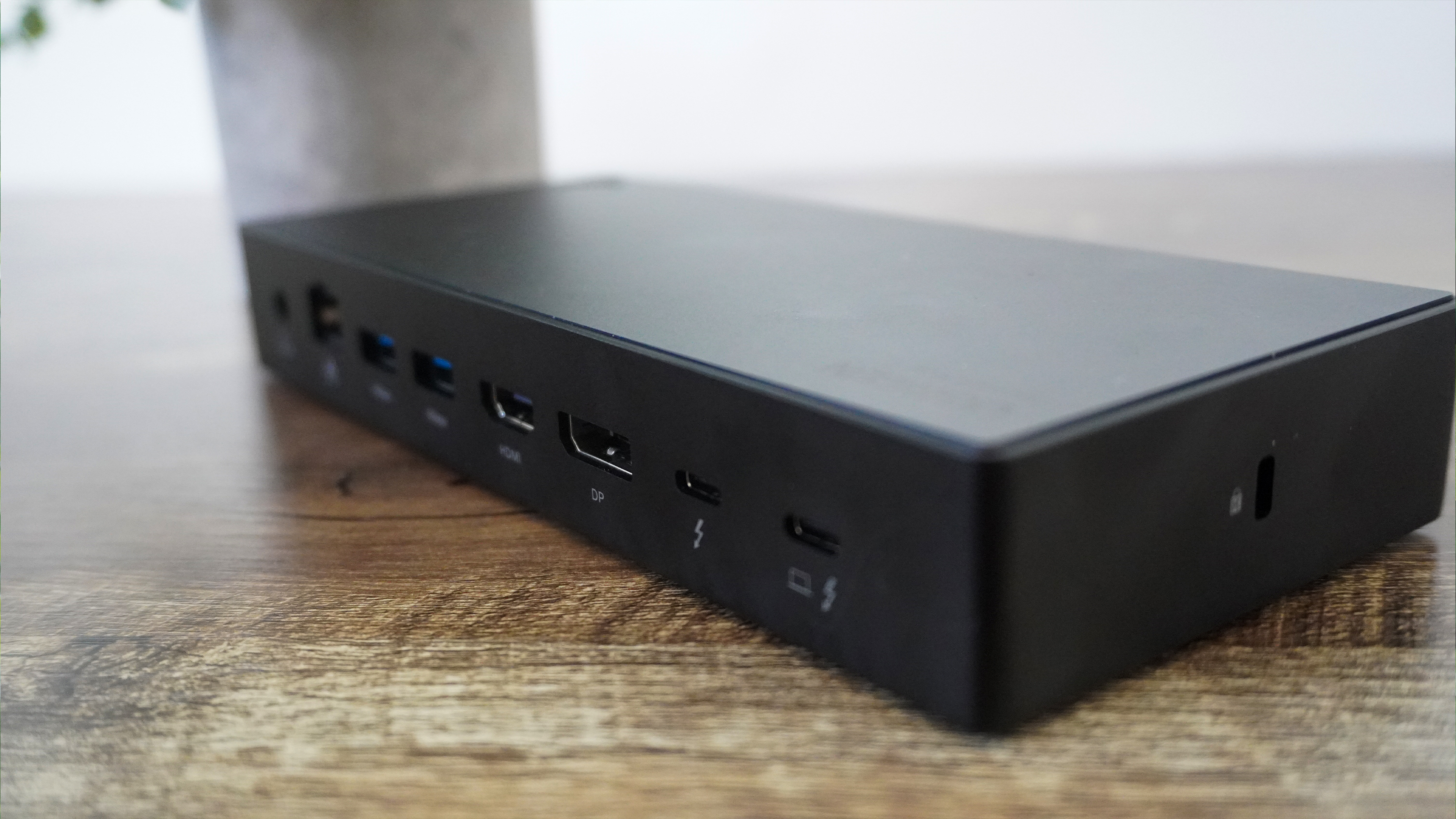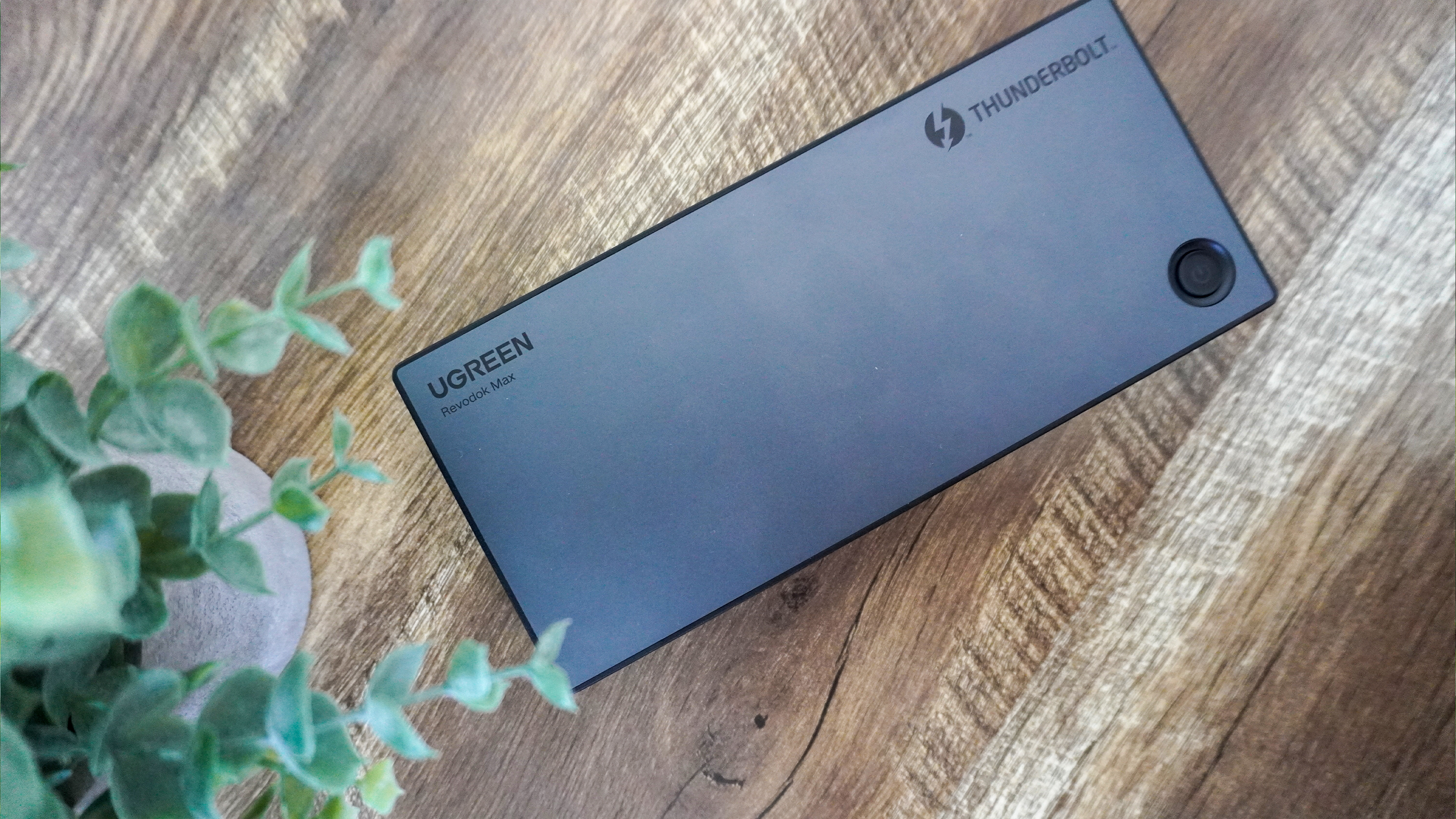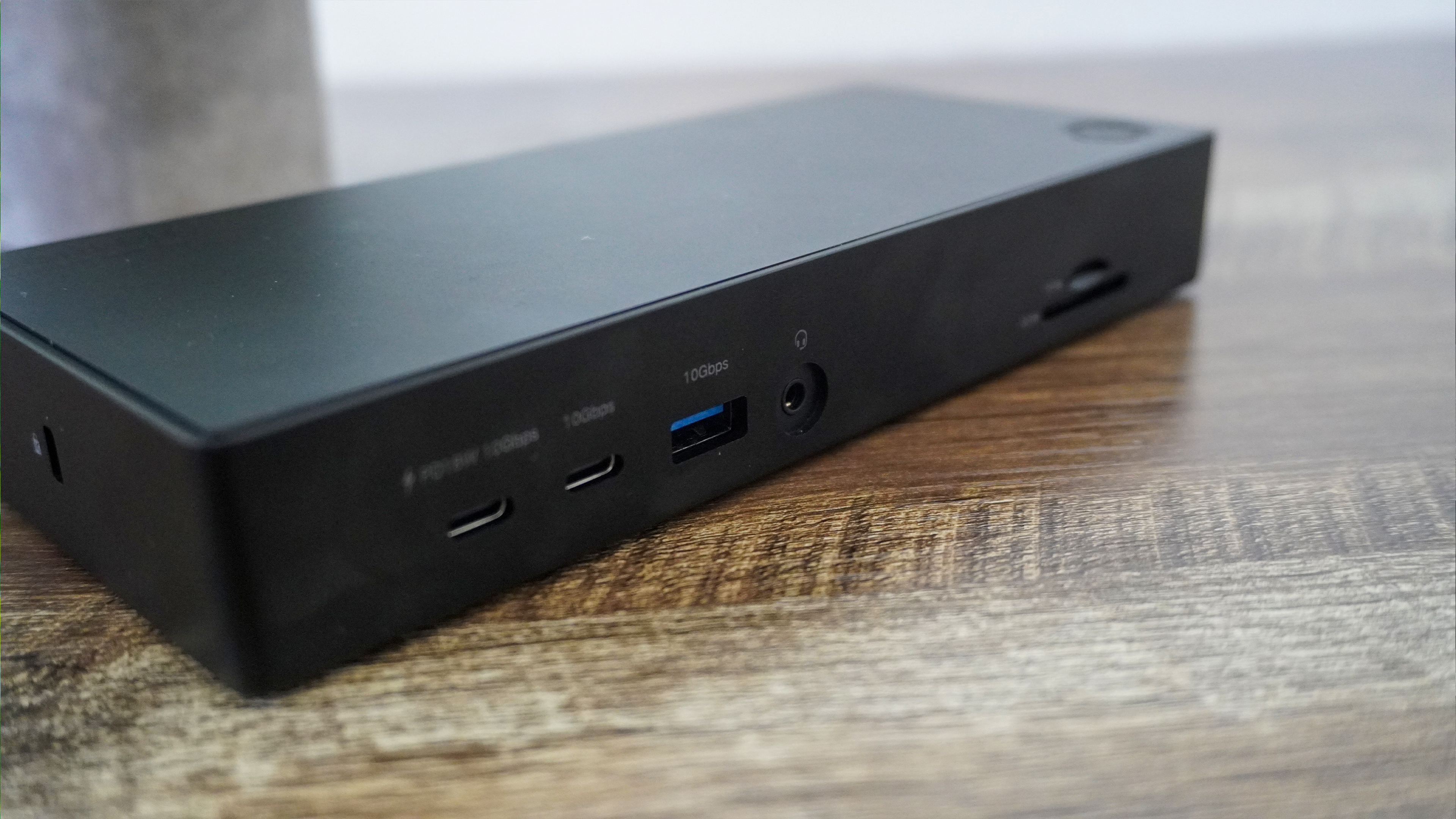Tom's Guide Verdict
Ugreen’s Revodok Max 313 is a port-packed premium package that takes pride on any desk. This one is for the pros for better and worse — from its refined, utilitarian design and vast array of sockets, to the eye watering price tag and lack of DisplayLink support for base Macs.
Pros
- +
Sleek, utilitarian design
- +
A huge array of ports
- +
Support for three 4K displays
Cons
- -
Power delivery limited to 60W
- -
Expensive at $399
- -
No DisplayLink limits base Mac support
Why you can trust Tom's Guide
When you get into the expensive docking station territory, you don’t just want a quick-fix purchase — you want a future proofed long-term investment. And the $399 Ugreen Revodok Max 313 Thunderbolt 4 dock delivers.
With support for up to three 4K displays, a huge array of 13 ports (including gigabit ethernet and TF/SD 4.0 card readers), and a low profile, thin and durable construction, this has everything the multi-screen professional needs.
Now I know you’re probably thinking why that name sounds familiar. Well, I did review the Revodok Max 213 not so long ago, which is confusingly at that same $399 price tag. Naturally, I thought this was simply an iterative update given the name, but instead we have a different strokes for different folks kind of situation going on here.
- Go for the 313 if you want a triple-display setup. This is its key benefit over the 213.
- Meanwhile, the 213 only has support for two 4K displays, but does offer full 90W power delivery (over the 313’s 60) and a 2.5 Gb/s ethernet.
So in terms of picking between these two, it very much comes down to your own planned setup. And if your setup is a magnificent tri-monitor structure, this is one of the best docking stations out there — provided you can swallow that steep price.
Ugreen Revodok Max 313 review: Cheat Sheet
- What is it? This is a Thunderbolt 4 docking station.
- Who’s it for? This is ideal for laptop users who want a triple-monitor setup for powerful multitasking at home.
- What’s the price? The Max 313 comes in at $399.
- What ports do you get? On this flatter chunk of aluminum, you’ll find two Thunderbolt 4 ports, HDMI 2.1, DisplayPort 1.4, plenty of USB-A connectivity, SD and microSD card slots, and gigabit ethernet.
- Are there any caveats to this docking station? Adding HDMI is a pro over the Max 213, but this does mean you lose an additional USB-C port. On top of that, power delivery is downgraded to 60W, and you’re getting gigabit ethernet over the future-proofed 2.5 Gbps.
Ugreen Revodok Max 313: Specs
| Price | $399 |
| Dimensions | 7.4 x 3.3 x 1.1 inches |
| Weight | 1.7 pounds |
| Ports (front) | 3.5mm audio jack, USB-A (10Gbps), 1x Thunderbolt 4 (downstream), 1x Thunderbolt 4 (host), SD card, microSD card |
| Ports (back) | Gigabit ethernet, 2x USB-A (5Gbps), HDMI 2.1, DisplayPort 1.4, DC power port, 2x USB-C (10Gbps) |
Ugreen Revodok Max 313 review: The ups
So let’s cut to the brass tacks here. If you’re looking for a long-term premium docking station that ties your laptop, three displays and a ton of accessories together, this is a banger.
Ports aplenty

You’re spending 400 big ones, so naturally you should expect this to be ported out the wazoo, which is what the Revodok Max 313 absolutely delivers. Alongside dual Thunderbolt 4, you have two additional USB-C ports with fast transfer speeds, TF/SD 4.0 card slots for a maximum speeds of 312MBps, and enough USB-C sockets for all your current and legacy peripherals.
And the superpower of the 313 over its 213 counterpart is the addition of a HDMI 2.1 port next to that DisplayPort 1.4. These combined with that Thunderbolt plug enables support for up to three 4K panels running at 60 FPS! Plus if you’re feeling fancy, you could go all the way up to 8K — but that 30 FPS limit restricts this to super isolated creative pro use cases.
This one really does have it all… Well, mostly all, but we’ll get to that.
Far more subtle on your desk

This combination of aluminum and plastic makes for a rigid, durable shell that has a seriously utilitarian, premium feel. That’s all fair and good, but the purpose of any docking station (at least in my opinion) is to blend into the background of your desk.
This absolutely does with its low profile aesthetic. Unlike the monolith of the 213, the 313 stays low key with its wider, flatter design that can blend oh so easily into your setup. It reminds me of my current favorite docking station, the Plugable TBT4-UD5, but with a far more upmarket build quality.
Keeping its cool
Without the prominent ventilation that I saw on the Max 213, I was a little nervous that this would get as hot as the surface of the sun running three displays, a desk SSD, my M3 MacBook Pro and four additional peripherals.
Surprisingly, it managed to keep its cool. Don’t get me wrong, temperatures did rise on the top sheet of metal, but not to a point where I experienced any thermal throttling — no reduced data transfer speeds or power output.
Ugreen Revodok Max 313 review: The downs
To make this the ultimate triple-display dock, some compromises have been made to the Ugreen Revodok Max 313 — one you won’t really notice, one that’s a little disappointing, and a third that is just a little confusing to me.
Small cutbacks in ports and power

In order to get that HDMI port in there for vastly wider monitor support, you lose one USB-C port in the process. It’s not the end of the world to those who don’t have the kind of setup that doesn’t necessitate so much I/O, but if you’re used to multiple Thunderbolts, you’re out of luck.
Plus, while the 60W power output is enough to charge up most laptops, it is down from the 90W of competing docks. That reduces fast charging speeds and can potentially reduce the max Thermal Design Power (TDP) of laptops — cutting power potential when plugged in.
By this point with plenty of Arm-based Macs and Copilot+ PCs, you’d struggle to go higher than 60W in a lot of standard notebooks. But with a dedicated GPU, you’ll need another cable to keep that 100W+ potential.
Sayonara DisplayLink

When it comes to that triple display support, not all laptops are the same. The base M-model Macs, for example, only have hardware support for two displays. That’s where DisplayLink software comes in, which through some programming wizardry can trick your MacBook into showing three screens.
This software support has gone AWOL on here, so if you are on an Apple Silicon Mac that sports M1, M2 or M3 (with Pro, Max and Ultra, you’re fine), then this triple array will not be available to you.
Ugreen Revodok Max 313 review: Verdict
With the Ugreen Revodok Max 313, pro users have choice. That’s all fair and good, but each choice comes with its own pros and cons.
In my opinion, I’d say that the 313 is more ideal for the creative pros — that triple display array is perfect for video and music editors alike, along with anyone who multitasks across a plethora of apps. Having that screen freedom is liberating for your productivity, and the low profile design of this dock means you can hide it really well.
But compromises to the maximum wattage output, dropping of a USB-C port, the lack of DisplayLink software and that $399 price limits it just to the pros. If you’d miss that additional port and power, the 213 is the way to go. Or even better, the Plugable TBT4-UD5 gives you these features too at a lower price.
So if you are a display fiend, this is the one for you. But make sure you’re tactical with your decision.

Jason brings a decade of tech and gaming journalism experience to his role as a Managing Editor of Computing at Tom's Guide. He has previously written for Laptop Mag, Tom's Hardware, Kotaku, Stuff and BBC Science Focus. In his spare time, you'll find Jason looking for good dogs to pet or thinking about eating pizza if he isn't already.

